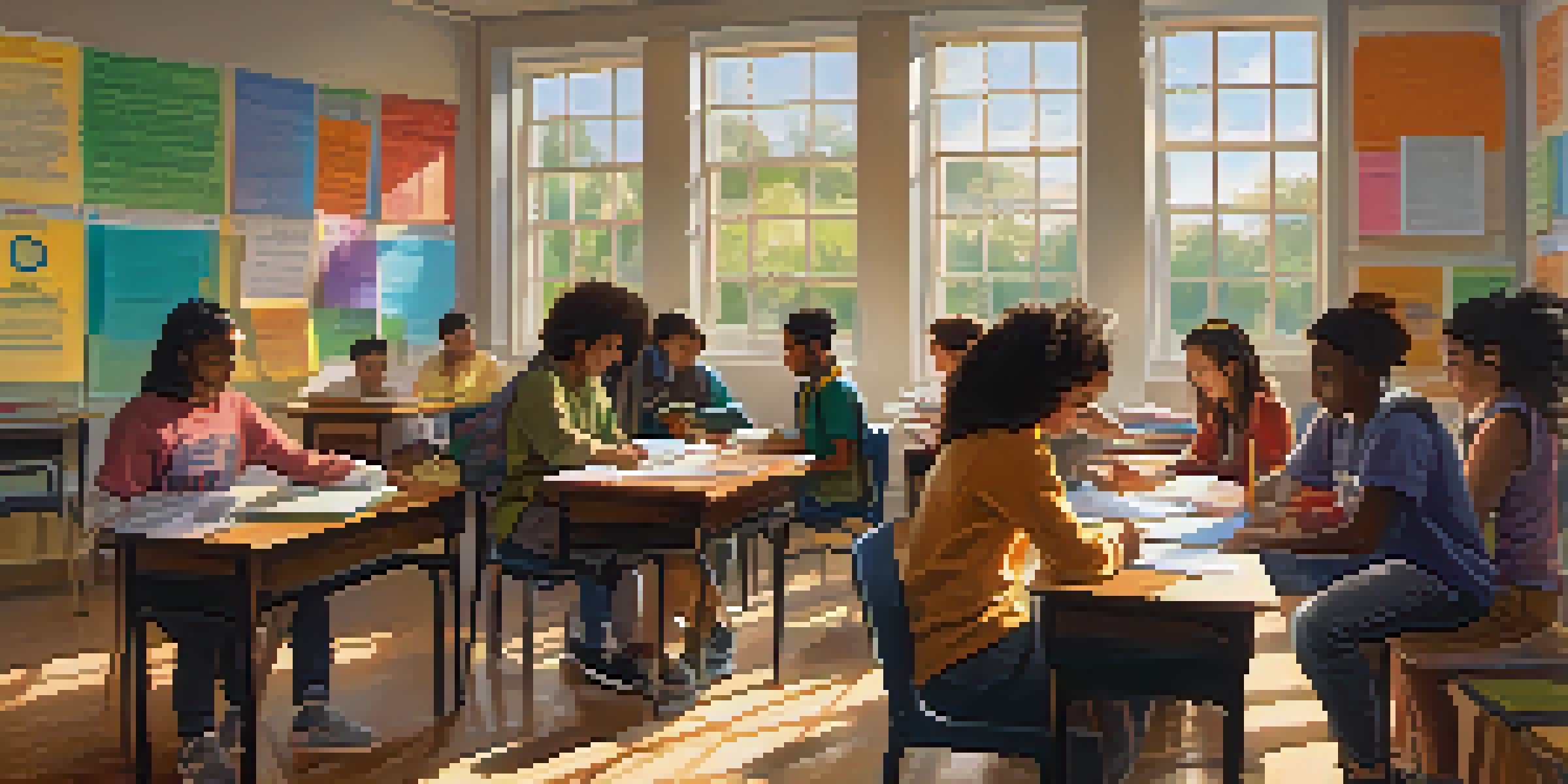The Impact of Cultural Diversity on Classroom Dynamics

Understanding Cultural Diversity in Education
Cultural diversity refers to the variety of cultural or ethnic groups within a society. In the classroom, this diversity can manifest in students’ backgrounds, languages, and lived experiences. Recognizing these differences is crucial as they shape how students engage with each other and the material being taught.
Benefits of Cultural Diversity in Classrooms
When students from diverse backgrounds come together, they bring a wealth of perspectives and ideas. This diversity can lead to richer discussions, enhanced problem-solving abilities, and increased creativity. For instance, a group project may yield innovative solutions when students approach problems from different cultural viewpoints.
Cultural Diversity Enhances Learning
Bringing together students from varied backgrounds enriches classroom discussions and fosters creativity.
Challenges of Managing Diverse Classrooms
While cultural diversity has many advantages, it can also present challenges. Misunderstandings may arise from different communication styles or cultural norms. Teachers must navigate these complexities to create an inclusive environment where all students feel respected and valued.
The Role of Educators in Promoting Inclusivity
Educators play a pivotal role in fostering an inclusive classroom atmosphere. They can achieve this by implementing culturally responsive teaching strategies that acknowledge and respect students' backgrounds. For example, incorporating diverse literature and resources can help students see themselves reflected in the curriculum.
Challenges Require Educator Support
Teachers must navigate communication differences and cultural norms to create an inclusive learning environment.
Creating a Culturally Responsive Curriculum
A culturally responsive curriculum is one that recognizes and incorporates the diverse backgrounds of students. This approach not only enhances engagement but also validates students’ identities. By including diverse voices in lesson plans, educators can create a learning environment that resonates with all students.
Encouraging Cross-Cultural Interactions
Facilitating interactions among students from different cultures can enhance understanding and empathy. Group activities, peer mentoring, and collaborative projects are excellent ways to encourage these interactions. These experiences allow students to learn from one another, breaking down stereotypes and fostering friendships.
Future Education Embraces Diversity
As classrooms grow more diverse, prioritizing cultural awareness will ensure all students feel represented and valued.
Assessing the Impact of Diversity on Learning Outcomes
Research shows that culturally diverse classrooms can lead to improved academic performance and social skills. Students exposed to diverse perspectives tend to develop critical thinking and adaptability, which are essential in today's globalized world. Evaluating these impacts can help educators refine their teaching practices to better serve all students.
The Future of Education in a Diverse World
As classrooms become increasingly diverse, the educational landscape must adapt accordingly. Future educators will need to embrace and celebrate diversity, ensuring that all students feel seen and heard. By prioritizing cultural awareness, we can create a more equitable and enriching educational experience for generations to come.